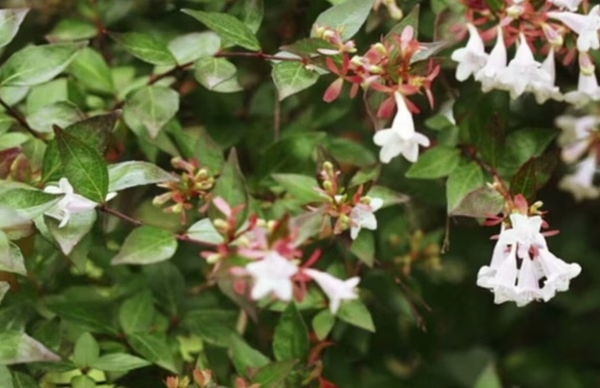
Abelia
Botanical Name
:
Abelia spp.
Plant Type
:
Flowering semi-evergreen to evergreen shrub
Seasons
:
Plant in early spring or fall; Blooms from late spring to fall
Sun Level
:
Full sun to partial shade; at least 4–6 hours of direct sunlight per day
Ideal Soil Temperature for Planting
:
50–77°F (10–25°C)
Soil Type
:
Well-drained, loamy or sandy soil
Hardiness Zones
:
4–11 (USDA)
Germination
:
Seeds may take several weeks to germinate; typically propagated by cuttings
P.H. Level
:
Slightly acidic to neutral (5.5–7.0)
Water/Irrigation
:
Water regularly until established, irrigate once or twice a week during summer; drought-tolerant
Fertilization
:
Use a balanced fertilizer like 10-10-10 in early spring; mulching around the roots throughout the year helps retain moisture and suppress weeds
Habit
:
Mounding, arching growth habit with dense foliage
Propagation
:
Softwood cuttings in summer, hardwood cuttings in fall, seeds, and layering
Final Plant Height
:
2–10 ft
Spread
:
2–8 ft
Flowers
:
White, pink, yellow, or light purple; tubular or bell-shaped and grow in clusters at the tips of the branches
Attracts
:
Bees, butterflies, and hummingbirds
Uses
:
Hedges, foundation planting, border planting, container gardening
Companions
:
Lavender, salvia, roses, butterfly bush, ornamental grasses
Pruning
:
Light pruning in late winter or early spring to maintain shape
Toxicity
:
Non-toxic to humans and pets
Pests
:
Aphids and spider mites
Diseases
:
Powdery mildew and anthracnose
Additional Info
:
Abelia’s fragrant flowers bloom for an extended period, making it a favorite among pollinators and gardeners
Botanical Name
:
Abelia spp.
Plant Type
:
Flowering semi-evergreen to evergreen shrub
Seasons
:
Plant in early spring or fall; Blooms from late spring to fall
Sun Level
:
Full sun to partial shade; at least 4–6 hours of direct sunlight per day
Ideal Soil Temperature for Planting
:
50–77°F (10–25°C)
Soil Type
:
Well-drained, loamy or sandy soil
Hardiness Zones
:
4–11 (USDA)
Germination
:
Seeds may take several weeks to germinate; typically propagated by cuttings
P.H. Level
:
Slightly acidic to neutral (5.5–7.0)
Water/Irrigation
:
Water regularly until established, irrigate once or twice a week during summer; drought-tolerant
Fertilization
:
Use a balanced fertilizer like 10-10-10 in early spring; mulching around the roots throughout the year helps retain moisture and suppress weeds
Habit
:
Mounding, arching growth habit with dense foliage
Propagation
:
Softwood cuttings in summer, hardwood cuttings in fall, seeds, and layering
Final Plant Height
:
2–10 ft
Spread
:
2–8 ft
Flowers
:
White, pink, yellow, or light purple; tubular or bell-shaped and grow in clusters at the tips of the branches
Attracts
:
Bees, butterflies, and hummingbirds
Uses
:
Hedges, foundation planting, border planting, container gardening
Companions
:
Lavender, salvia, roses, butterfly bush, ornamental grasses
Pruning
:
Light pruning in late winter or early spring to maintain shape
Toxicity
:
Non-toxic to humans and pets
Pests
:
Aphids and spider mites
Diseases
:
Powdery mildew and anthracnose
Additional Info
:
Abelia’s fragrant flowers bloom for an extended period, making it a favorite among pollinators and gardeners
Written by Nondiah Khalayi – https://www.linkedin.com/in/nondiah-khalayi/

